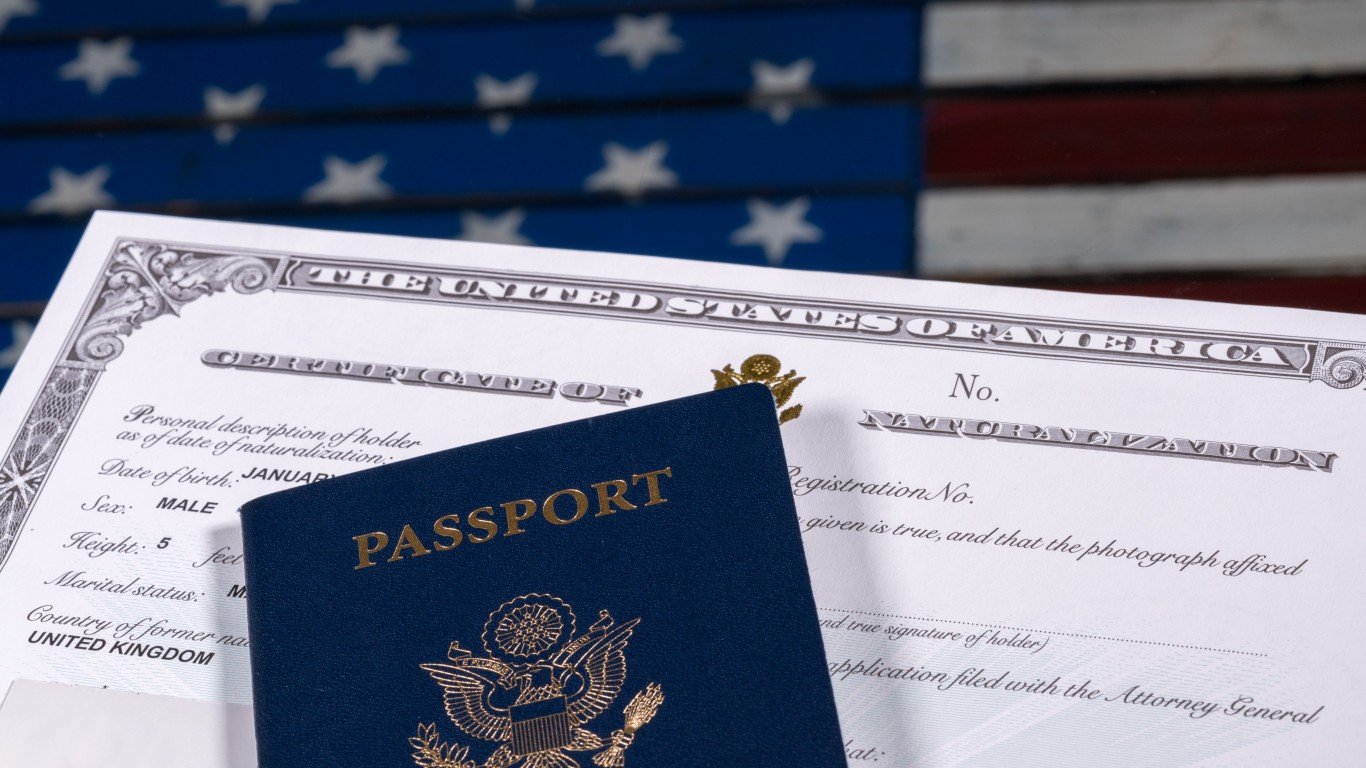

Retirement can be a grand adventure. But it can bring a lot of anxiety to the forefront, too. One major source of anxiety for many retirees is securing Social Security benefits.
While applying for Social Security may seem straightforward, it’s important to pack the right documents and knowledge to ensure a smooth, worry-free transition into retirement. Let’s unpack the essentials to navigate the application process efficiently and confidently.
First, we’ll look at the documents you’ll need to gather. Before you apply, we recommend learning everything you can about Social Security in our Social Security Hub.
1. Gather Your Documents

You’ll need to gather many different documents to apply for Social Security. Luckily, you should have most of these documents handy around your home. Still, before you head off to apply, we recommend having all of these key documents ready, as you’ll need them.
The first layer in your Social Security backpack should be documents that verify your citizenship or legal status in the United States. You can go about this in several ways, depending on the documents you have ready. Here are some of the acceptable forms of documentation:
- Birth Certificate: The preferred option is an official copy of your birth certificate.
- Passport: A valid U.S. passport serves as proof of citizenship and can replace a birth certificate.
- Naturalization Papers: If you are a naturalized citizen, your naturalization documentation is required for this step.
If you don’t have any of these documents readily available, we recommend obtaining them well in advance. In many cases, they can take several weeks to reach you.
The next essential item to apply for Social Security is proof of your earnings history. This information is vital for the Social Security Administration to determine your benefit amount. The specific documents you need can vary again. It’s mostly reliant on your employment situation:
- W-2 Forms: If you worked for an employer and regularly received a paycheck, you’ll need your W-2s to show your wages and the withheld taxes. We recommend gathering as many of these documents as you can. A longer history isn’t required, but it can make the process easier.
- Self-employment Tax Returns: If you’re self-employed, your tax returns with the corresponding Schedule SE will be proof of earnings. Again, several years’ worth is recommended, but you should aim to provide for at least the last ten years.
- Military Service Records: Military service can also contribute to your Social Security earnings. If applicable, we recommend keeping a record of your military service.
The Social Security Administration can often access your earning history electronically. However, having physical copies as a backup can help with potential discrepancies.
Of course, you’ll also need your Social Security number. You don’t need your card specifically, but you will be asked for your number when applying.
2. Determine Your Eligibility

After you have all your documents handy, the next step is determining if you meet eligibility requirements. Some of your documents can help you figure this out, so have them handy.
While Social Security is most commonly associated with retirement, there are actually several different types of benefits, each with its own eligibility criteria. Social Security expanded pretty quickly after it was established in 1965. We have a whole in-depth history explanation if you want to hear how this went down.
Here are the main types, which we also explored a bit more in-depth in our types of Social Security benefits guide:
- Retirement Benefits: These monthly payments occur once you reach retirement age and stop working. While you can claim these at 62, we recommend waiting until your full retirement age to apply. We also have a guide to your benefit potential depending on your age.
- Disability Benefits: These payments are for people who cannot work due to a medical condition expected to last at least a year (or result in death).
- Survivors Benefits: Spouses, children, and dependent parents of deceased workers may qualify for monthly benefits if the deceased worker paid into Social Security.
- Supplemental Security Income: Unlike other benefits, SSI isn’t based on your income or how much you’ve paid in taxes. Instead, it’s a need-based benefit for low-income individuals who are disabled.
There are several ways to check and see if you’re eligible for benefits. SSA has an online tool that helps you figure out if you’re eligible for certain benefits. It should take less than 10 minutes and works for all benefits.
When determining if you’re eligible, there are several factors that SSA considers, such as:
- Work History: In most cases, Social Security requires that you have a minimum amount of recent work history to qualify. There are very few cases when a work history isn’t required.
- Age: The retirement eligibility age is typically 66 or 67, depending on your birth year. However, you can start receiving Social Security at 62, but your monthly benefits will be lowered permanently.
- Medical Condition: If you’re trying to qualify for disability, you must have strong documentation proving your medical condition. This condition must prevent you from performing any substantial gainful activity.
3. Choose How to Apply

Now that you’re ready to apply, there are several ways you can go about doing so.
Online
Online applications are one of the most popular options, as they are fast and convenient. You can complete your application at home at your own pace, save your progress, and come back later as needed.
You will need to create a Social Security account if you don’t have one already. For any documents that you only have hard copies of, scanning and saving them electronically will be required.
The online process takes you through many questions about your work history and the specific benefits you’re applying for. You won’t have much help, which can increase the probability of making a mistake.
Phone Application
You can also apply for Social Security over the phone. In this case, a representative will guide you through the application process, answering any questions and clarifying as you go along. If you aren’t comfortable doing the application by yourself online, this can be a solid option.
Have your personal information and documents ready before you call, as you likely won’t have time to scrounge around for them!
If the SSA requires hard copies of any supporting documents, you may need to mail in the required documents later.
In-Person Applications
You can visit an office and sit down with a Social Security representative. They can answer your questions and guide you through the application process. Often, this works best for those in complex situations who may need someone to personally go over their application with them.
You’ll need to schedule an appointment with your local Social Security office, and be sure to bring all your original documents with you.
4. Submit Your Application

Once you’ve completed your application, it’s time to submit it. While this may seem straightforward, there are actually several things you’ll need to keep in mind.
If you’re applying online, be ready to upload scanned copies of all the required documents. These files must be in an acceptable format (PDF, JPEG, or PNG). Review all of your documents and application for missing information or errors, which can cause your application to be denied.
When you submit, you’ll receive a reference number for your application. Keep this handy.
You can also submit by mail. Place your application form and original documents in a secure envelope and address them to your local SSA center. Do not mail them to your local Social Security office.
Submitting your application in person is also available, but you’ll need to schedule an appointment, as we described above. Bring your completed application and all the necessary documents to the appointment. A Social Security representative will look at your application, ask clarifying questions, and submit it for you.
5. Wait for a Decision

The waiting part of Social Security can be challenging. After you gather all your documents and submit your application, you’ll spend much time doing nothing.
Your application’s processing time depends on many factors. Retirement benefits often have the fastest processing time, while disability benefits can take longer to get approved. If your application is complete, it will likely pass through faster than an application missing information.
Processing times can also vary depending on the time of year and workload of the SSA.
You will receive an email or letter acknowledging your application, including a reference number. Keep track of this! You may need it later.
Eventually, the SSA will make a decision based on your application and notify you by mail. If approved, a letter will arrive detailing your benefit amount, start date, and other important information. If your claim was denied, the letter will explain the reason for your denial and information on appealing.
You can always appeal a decision, typically within 60 days. The appeal process involves submitting additional documents (if documents were simply missing) or requesting a hearing before a judge. The SSA website has plenty of information on the appeals process.
We highly recommend seeking legal assistance specializing in Social Security benefits if your case is more complicated and you are denied. Sometimes, you need someone very experienced to review your application specifically. You can also learn more about how Social Security works in our guide.
Sponsored: Attention Savvy Investors: Speak to 3 Financial Experts – FREE
Ever wanted an extra set of eyes on an investment you’re considering? Now you can speak with up to 3 financial experts in your area for FREE. By simply
clicking here you can begin to match with financial professionals who can help guide you through the financial decisions you’re making. And the best part? The first conversation with them is free.
Click here to match with up to 3 financial pros who would be excited to help you make financial decisions.
Thank you for reading! Have some feedback for us?
Contact the 24/7 Wall St. editorial team.



